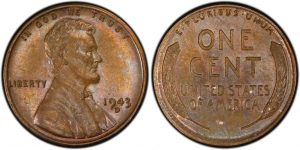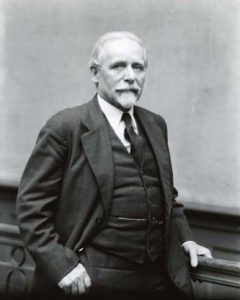Inspector General to Investigate the U.S. Mint
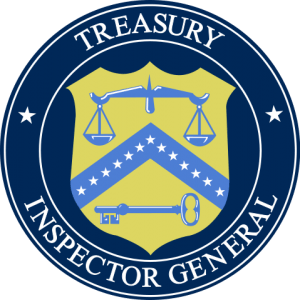 According to Coin World, the Treasury Office of Inspector General (OIG) “may” investigate how the U.S. Mint has handled the sales of limited-edition numismatic collectibles. Coin World may have confirmed information provided to me on background.
According to Coin World, the Treasury Office of Inspector General (OIG) “may” investigate how the U.S. Mint has handled the sales of limited-edition numismatic collectibles. Coin World may have confirmed information provided to me on background.
Although the web-based ordering has sort-of worked, I reported on the systemic issues facing the U.S. Mint in moving forward. In summary, my investigation found:
- The alleged silver shortage was not a shortage of silver but a failure of the U.S. Mint to manage its supply chain properly.
- The U.S Mint’s insistence that Internet robots (BOTs) were the cause of their web-based issues was the symptom of a more significant problem that they have not learned from their past mistakes.
- The U.S. Mint’s management managing like they were afraid of repercussions because the lawyers said so. The way it sounded, the U.S. Mint management was not managing but taking instructions. If they cannot manage, should they be replaced by lawyers?
An investigation by the Treasury OIG is an excellent first step. But experience has shown that an OIG report does not guarantee that U.S. Mint will fix the problems. I have seen government managers and appointees say all of the right things and do little to nothing.
It might require an act of Congress to fix the U.S. Mint. If it requires an act of Congress, don’t hold your breath waiting for changes.
Polymer notes in UK will continue to have tallow
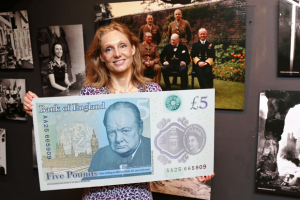
Victoria Cleland, Chief Cashier at the Bank of England, presenting the Churchill War Rooms with their New Fiver
Tallow is made from suet, the fatty deposits around the organs of cows and sheep. It is a byproduct of the process of butchering a cow for its meat and hides. In its natural form, suet is only used for cooking and some preservation. When it is rendered (by boiling) into tallow, it is used to manufacture soap, candles, and lubricants. The use of tallow in even the most synthetic lubricant is ubiquitous. Machines used to harvest crops or grease moving parts in automobiles have tallow in them.
Since the uproar from vegan activists, the Bank of England spent a lot of time and a lot of money to research the environmental and social impact of tallow in the notes.
The amount of paperwork that was generated for this issue is astounding. They looked at everything from the use of alternative lubricants, like palm oil, to the religious and social impacts to Her Majesty’s loyal subjects. In the final report, the Bank of England even summarized the response when they reached out to “representative groups,” both religious and activists organizations.
All that time and money led to the decision to “ not change the composition of the polymer used for future notes.” Why? Because the costs and environmental impact to using alternatives like palm oil would be more expensive, the notes have such low amounts of tallow, typically less than 0.05-percent (five-one-hundredths of a percent) of derived animal products, and the rest of the community just does not see this as a problem!
It is like I said in my original post, they are probably breathing more dander in a single day than they are touching tallow in all of the polymer banknotes that cross their paths. Tallow is used in all sorts of lubrication products, especially those used in transportation. It is everywhere.
I hope the vegans can either learn to live within society’s decisions or find another way to pay for goods and services, like using credit cards.
1943-D Bronze Cent makes a TV appearance, sort of
Raymond Reddington, played by James Spader, was trying to gain the attention of a high-rolling thief and found himself at a numismatic auction. The item up for bid was the 1943-D Bronze Lincoln cent. As part of the story, it was announced that it was the only one known to exist and that it was graded by the Professional Coin Grading Service.
Currently, there is only one known 1943-D Bronze Lincoln Cent and was graded by PCGS to be MS-64BN. It last sold for $1.7 million in 2010.
Since then, more 1943 Bronze Lincoln Cents were found including a 1943-S graded MS-62BN by PCGS. That coin was sold to Bill Simpson, a co-owner of the Texas Rangers, for $1 million in 2012. Simpson owns a complete set of 1943-PDS and 1944-PDS off-metal Lincoln cents, the latter made of zinc coated steel.
In the show, the hammer price was $3 million. All things considered, it is probably an accurate estimate of what the coin might be worth if it were to come to market today.
Of course, they did not use a real 1943-D Bronze Lincoln cent and there was a mistake when the coin showed up later in the story. But if you have not seen this episode, I am not going to spoil it for you!
Get Ready for the American Legion Commem in 2019
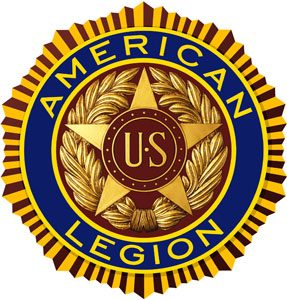 Sometimes, it takes time for the online system to catch up with the acts of Congress. But in what looks like a rare display of bipartisanship, the Senate passed The American Legion 100th Anniversary Commemorative Coin Act (H.R. 2519) on September 29, 2017. It becomes the first piece of numismatic-related legislation passed by the 115th Congress.
Sometimes, it takes time for the online system to catch up with the acts of Congress. But in what looks like a rare display of bipartisanship, the Senate passed The American Legion 100th Anniversary Commemorative Coin Act (H.R. 2519) on September 29, 2017. It becomes the first piece of numismatic-related legislation passed by the 115th Congress.
When signed by the president, who is in Puerto Rico today and expected to be in Las Vegas tomorrow, the American Legion 100th Anniversary Commemorative Coin program will be the second commemorative program of 2019. The other is the Apollo 11 50th Anniversary Commemorative program.
Typical of the three coin commemorative programs, the law authorizes a $5 gold, $1 silver, half-dollar clad coins with maximum mintages of 50,000, 400,000, and 750,000 respectively.
According to the bill, “The design for the coins minted under this Act shall be emblematic of The American Legion.” Other than the required inscriptions, no other restrictions were placed on the design except the required reviews by the U.S. Commission of Fine Arts and Citizens Coinage Advisory Committee.
Surcharges of $35 for the gold coin, $10 for the silver coin, and $5 for the clad coin will go to the American Legion to help with their service efforts. If the program sells out, the Amercian Legion can earn $9.5 million.
H.R. 2519: The American Legion 100th Anniversary Commemorative Coin Act
Weekly Numismatic World News for October 1, 2017
Pre-sale prices are averaging $85-200 over the spot price, which is currently $928.00 on the world market. Since the U.S. Mint only sells coins to authorized dealers, those dealers will act as wholesalers down the chain. Each time a coin changes hands, there will be a markup. A coin can pass through a few hands before being offered for sale to the public.
And these prices are before the dealers rush to slab these coins. I am sure those grading MS-70 will go for significant premiums!
If you are interested in buying the coin, I would recommend shopping around. However, if you have a favorite dealer and there is not much of a difference between an online price and the dealer, you may want to consider supporting your local dealer!
And now the news…
Shoppers have been reminded by the Royal Mint that the deadline for using the round pounds is October 15, before they are replaced forever by a 12-sided coin.
After more than a thousand years of service, the Paris mint has thrown its doors open to the public with a vast exhibition of treasures, collectors' coins and a view of the craftsmen in their workshops.
Congressman Richard Neal has been leading the effort to mint the coin celebrating the sport’s anniversary.
When I become the Supreme Overlord of the Earth and all its satellites, or Secretary of the Treasury (I plan on becoming one of those …
A new 50p coin celebrating Sir Isaac Newton can now be snapped up by people visiting his birthplace and family home. Just 375 of the coins are being released into tills at Woolsthorpe Manor in Lincolnshire.
A Sheffield man who collects rare banknotes and coins says South Yorkshire people can make plenty of money as Britain makes the switch to polymer currency.
September 2017 Numismatic Legislation Review
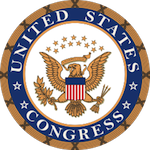 Trying to follow the inner workings of politics is more frustrating than what you see on television news. Part of following the inner workings of Congress is to try to figure out what Congress will do next is not only understanding where legislation is in the process, what Congress calls “regular order,” but it also requires understanding who is asking for what favors in order to get pet projects passed.
Trying to follow the inner workings of politics is more frustrating than what you see on television news. Part of following the inner workings of Congress is to try to figure out what Congress will do next is not only understanding where legislation is in the process, what Congress calls “regular order,” but it also requires understanding who is asking for what favors in order to get pet projects passed.
As part of the House of Representatives’s regular order, they created a rule that two-thirds of the members must support a commemorative coin bill by being a co-sponsor before it will be considered in committee. This means that 287 members must sign-on as co-sponsors. Once the bill meets the threshold, the bill goes through the committee process.
Although both the Naismith Memorial Basketball Hall of Fame Commemorative Coin Act and The American Legion 100th Anniversary Commemorative Coin Act met that threshold, the threshold was met a while ago. This means the bills were supposed to go through the committee process except neither did. Both bills were introduced on the floor under a process called “suspension of the rules.” Under suspension of the rules, a bill may be brought to the floor for debate and vote without having to go through regular order.
When a bill is brought to the floor, there is a debate period determined by whoever is acting as the presiding officer. Both sides get to have their say, however, in these cases, the member who introduced the bill will stand up and provide a justification for the record as the only speaker. Once the debate period ends, the House votes on the bill.
Both bills were passed on a voice vote.
What can make following legislation frustrating is that there was no indication that these bills were going to be brought to the floor under suspension of the rules. I had asked a source whether this was done in order to curry favor with the sponsors. My source was uncertain as to why these bills were rushed to the floor.
Now it is on to the Senate. Let’s see how quickly they get to this legislation or whether it will be burried in committee.
